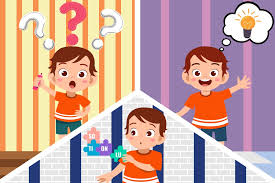The relationship between education and entertainment has never been more symbiotic than in today’s technology-driven classroom. The dedicated teacher now has an unprecedented array of resources at their disposal, with kids animated shows emerging as particularly powerful tools for engagement and instruction. This partnership between educators and animated content creates new avenues for reaching diverse learners through multiple sensory channels.
Professional development for educators increasingly includes guidance on effectively incorporating media literacy and animated content into standards-based curriculum. This represents a significant shift from earlier educational paradigms that viewed entertainment media as distractions rather than potential teaching tools. The modern approach recognizes that when thoughtfully curated and contextualized, animated programs can reinforce academic standards while simultaneously developing critical thinking skills.
The neuroscience behind this educational approach is compelling. When children engage with animated content, multiple brain regions activate simultaneously—visual processing centers, language areas, emotional response systems, and memory formation pathways all engage in concert. This multi-region activation creates stronger neural connections than single-modality instruction, potentially enhancing both comprehension and retention of educational content.
Differentiated instruction—a cornerstone of modern educational practice—finds natural support in animated resources. For visual learners, the imagery provides clear mental models; for auditory learners, the dialogue and music create additional pathways to understanding; for kinesthetic learners, the movement and action sequences offer yet another dimension of engagement. This multi-modal presentation helps teachers address diverse learning needs simultaneously.
Classroom management strategies can also benefit from strategic references to animated content. Many teachers create behavior systems based on popular animated characters or scenarios, leveraging children’s emotional connection to these figures to motivate positive choices. When students see their classroom procedures mirroring the teamwork and problem-solving modeled in favorite shows, they more readily internalize these behavioral expectations.
Parent-teacher partnerships strengthen when educators communicate about how animated content connects to classroom learning. When teachers suggest specific episodes that reinforce current units of study, they provide families with concrete ways to extend classroom conversations at home. This continuity between school and home viewing helps children recognize the educational value in what might otherwise be seen as pure entertainment.
The evolution of educational animation has produced increasingly sophisticated content explicitly designed to align with curriculum standards. Programs developed with educator input often include companion websites with lesson plans, discussion guides, and extension activities. These comprehensive teaching packages make it easier for busy educators to meaningfully integrate animated content without extensive additional planning.
Digital citizenship education finds natural context in discussions about animated content. When teachers guide conversations about animation production, appropriate viewing choices, and media balance, they help students develop healthy media consumption habits. These discussions build critical awareness that transfers to all aspects of digital life, preparing children for increasingly complex media environments.
Assessment possibilities expand when teachers incorporate animation-related projects into their evaluation strategies. Students might create their own animated sequences to demonstrate understanding of scientific processes, historical events, or literary concepts. These creative assessment options allow children to showcase knowledge in ways that traditional testing cannot capture, often revealing deeper understanding than more conventional methods.
Professional learning communities increasingly share best practices around media integration, with animated content featuring prominently in these discussions. Teachers collaborating across grade levels and subject areas identify thematic connections and developmental progressions in how animated content can support sequential learning from early childhood through upper elementary years and beyond.
The global perspective offered through internationally-produced animation provides teachers with windows into diverse cultures and traditions. When educators thoughtfully select animated content from various regions, they expose students to different artistic styles, storytelling traditions, and cultural viewpoints. This international dimension broadens children’s awareness in increasingly important ways.
Looking toward future educational trends, the integration of animated content appears likely to deepen rather than diminish. As augmented reality and virtual reality technologies become more accessible in educational settings, the line between animated programming and immersive learning experiences will continue to blur. Forward-thinking educators are already considering how these evolving technologies will transform classroom practice in the coming decade.
Ultimately, the synergy between dedicated educators and thoughtfully-created animated content creates learning environments where engagement and education seamlessly intertwine. In these dynamic classrooms, children develop not only academic knowledge but also the critical analysis skills necessary for navigating an increasingly complex media landscape with confidence and discernment.

